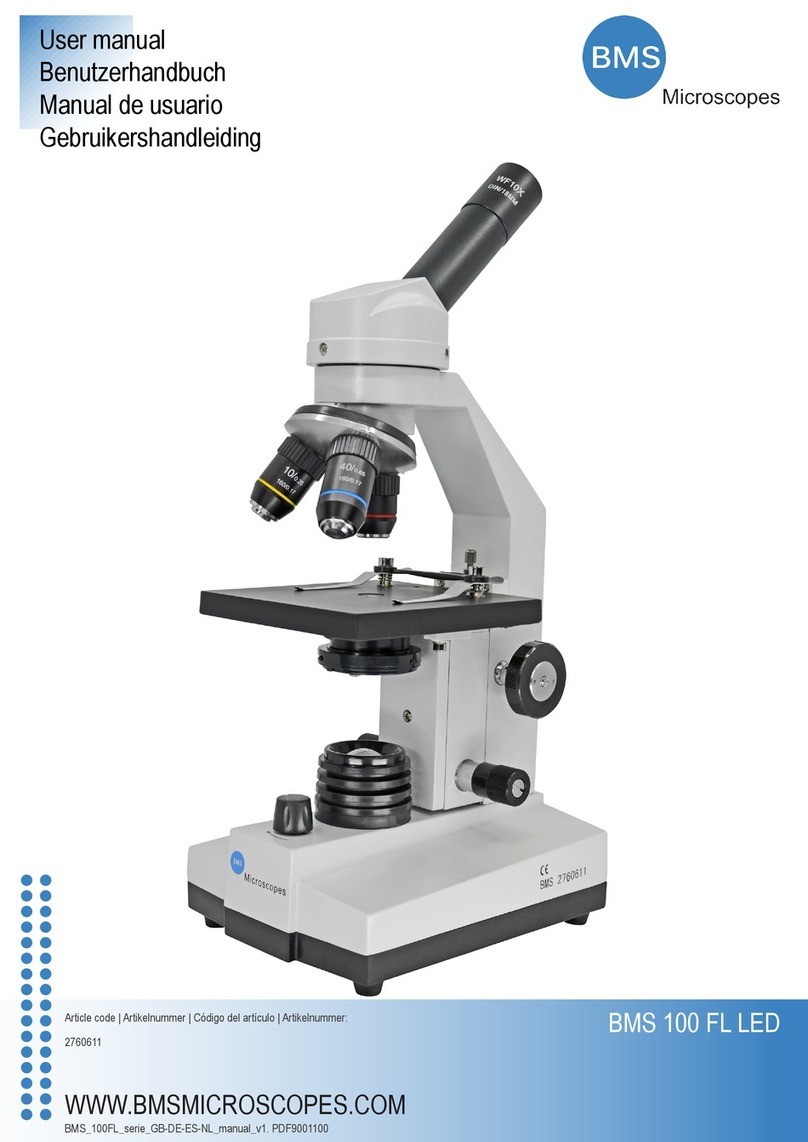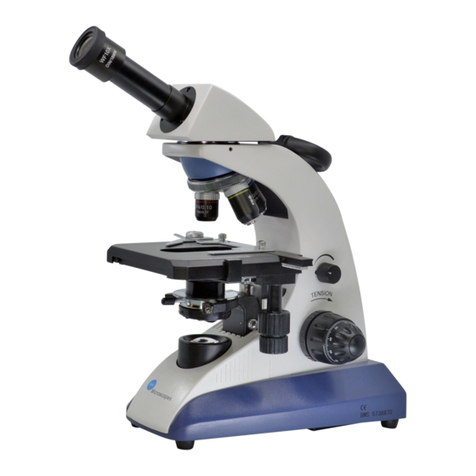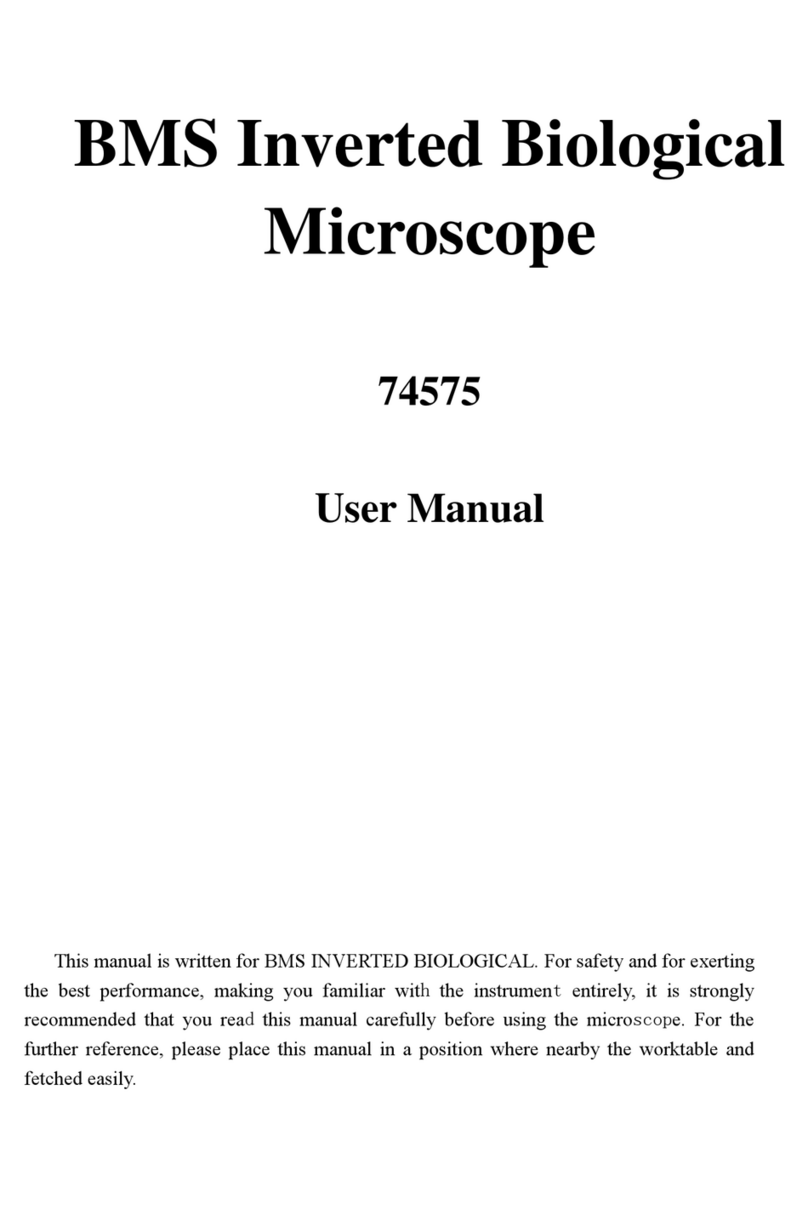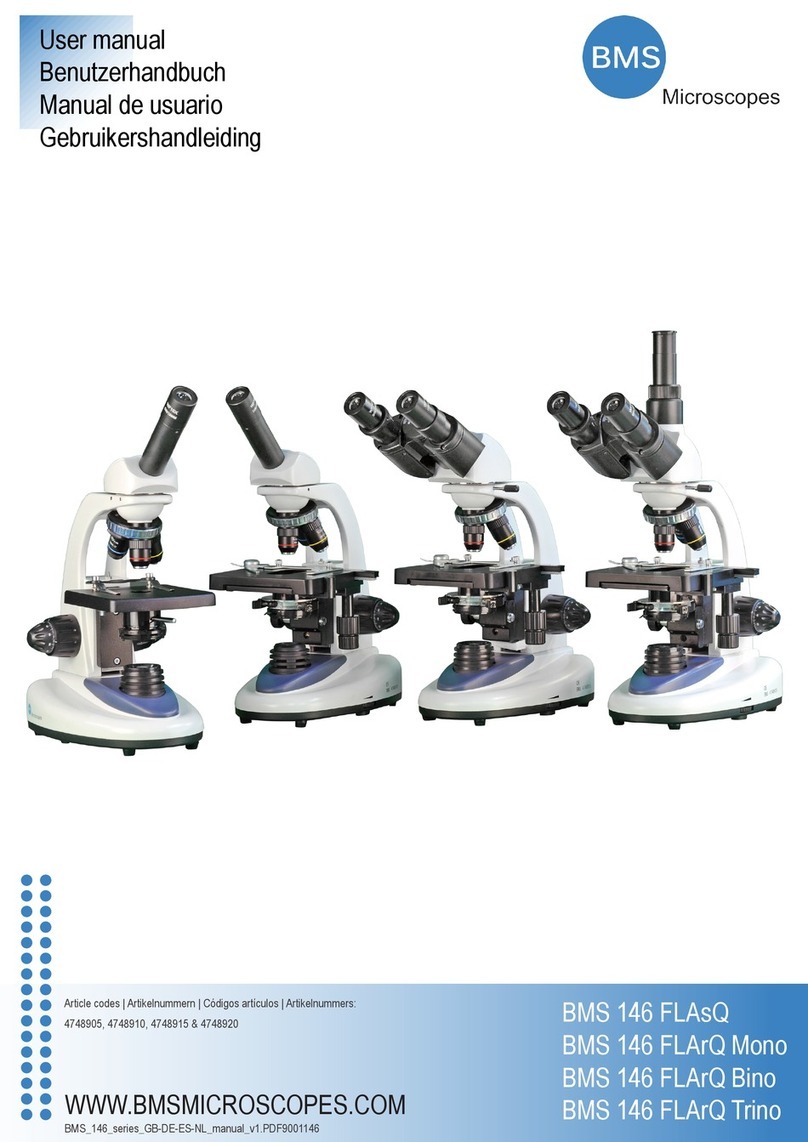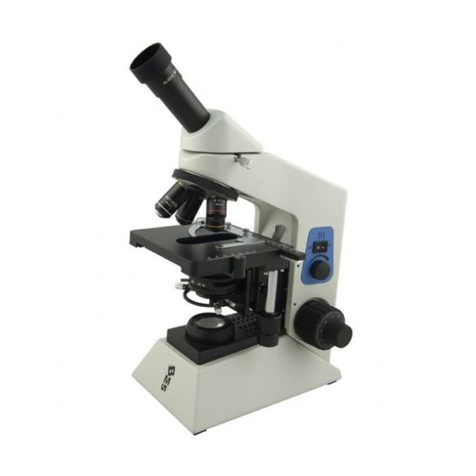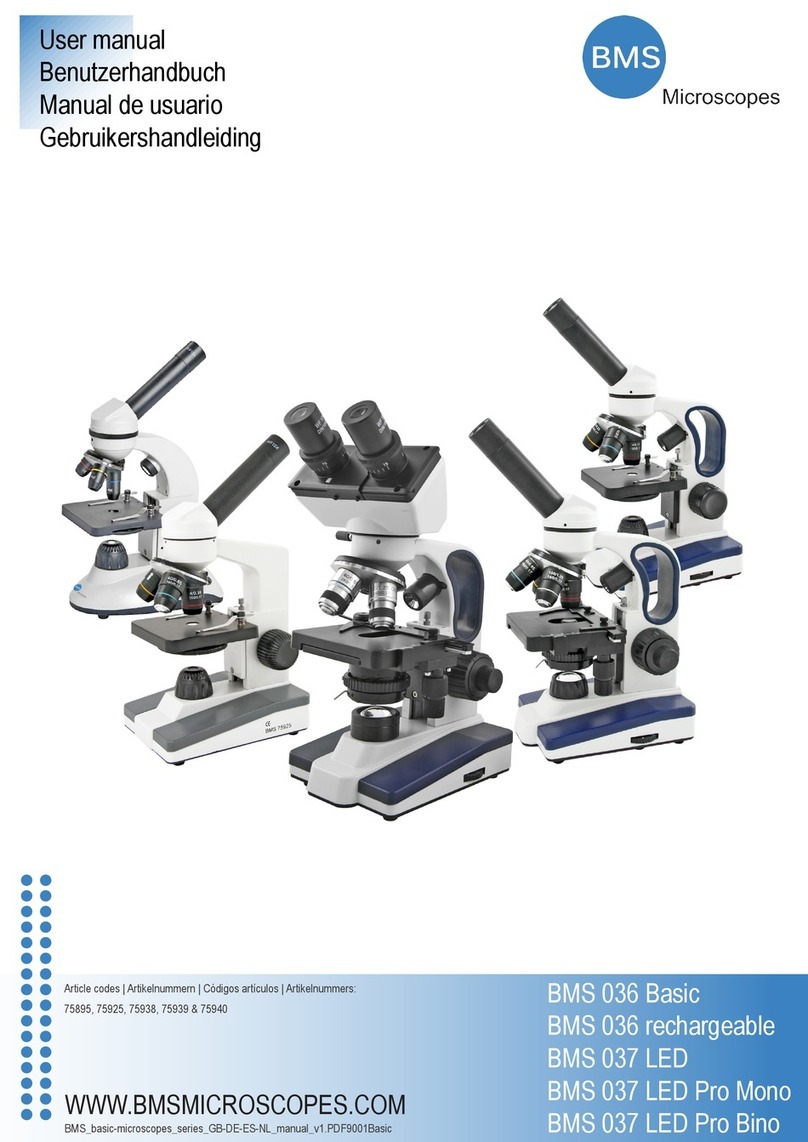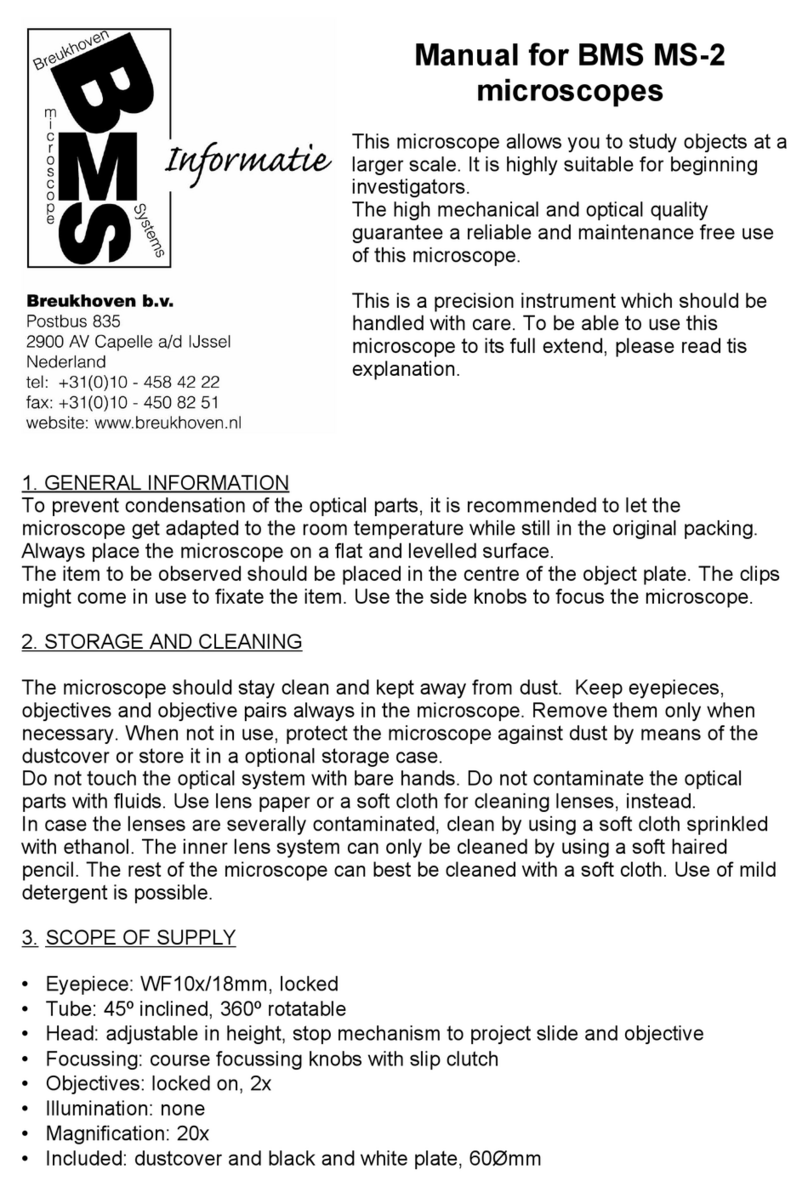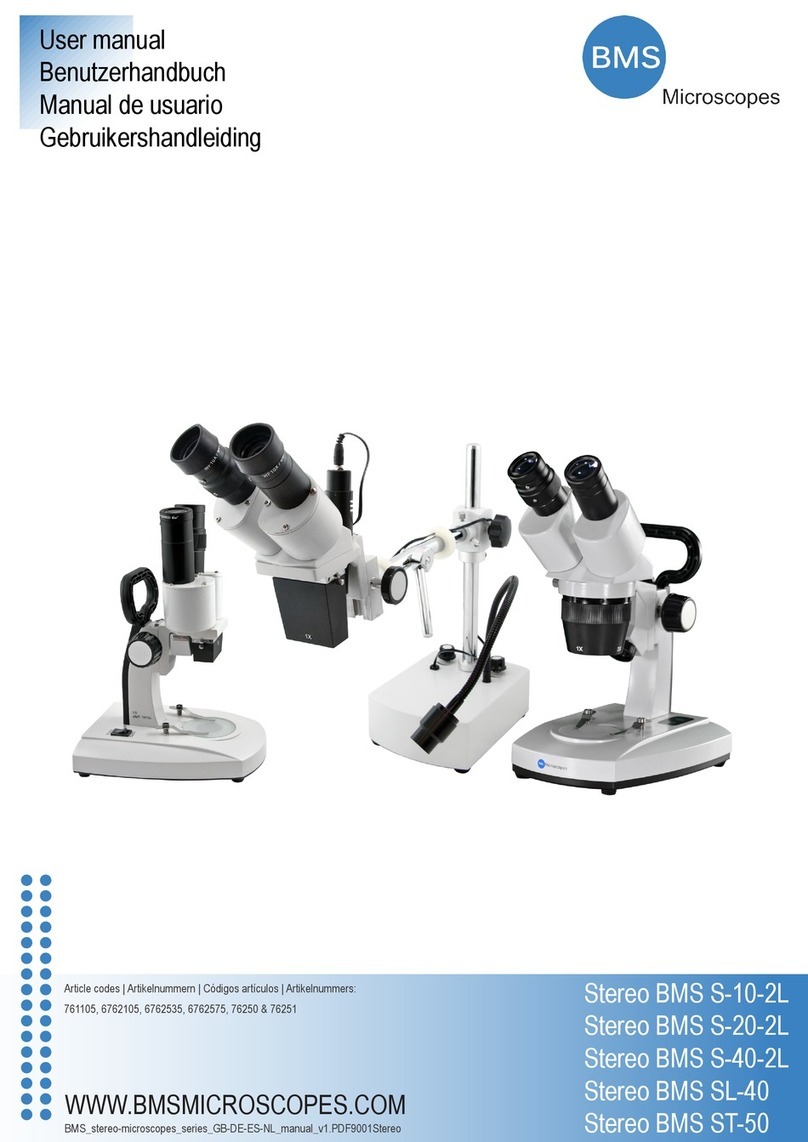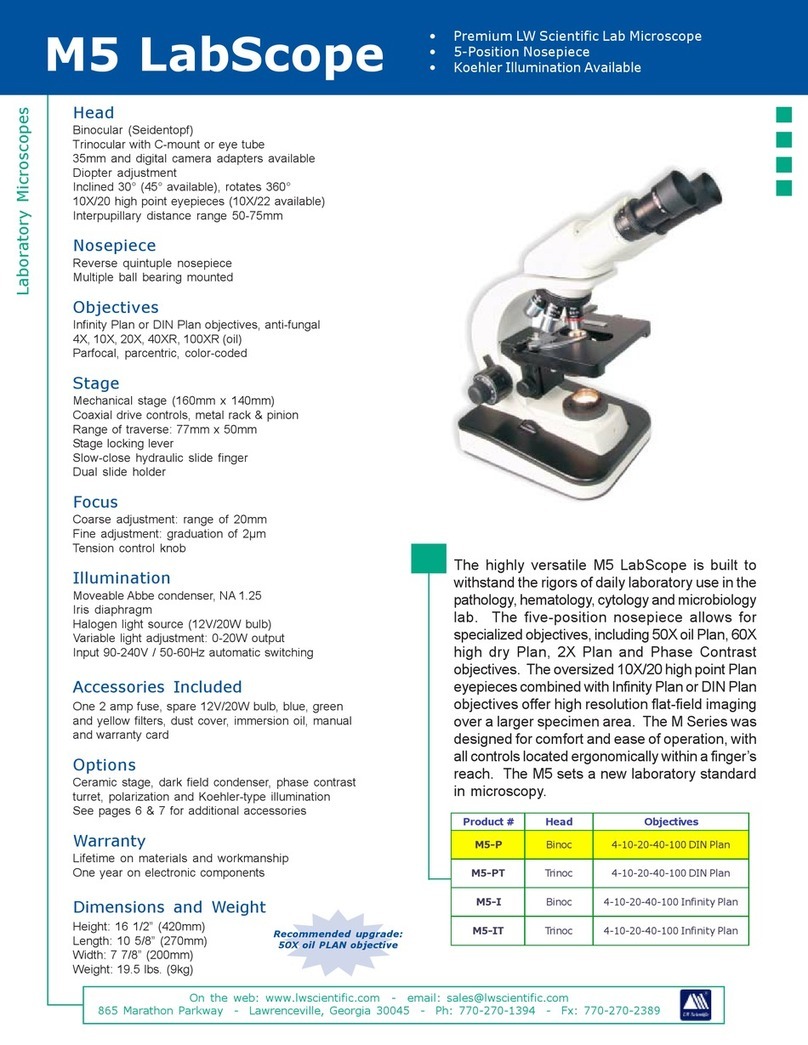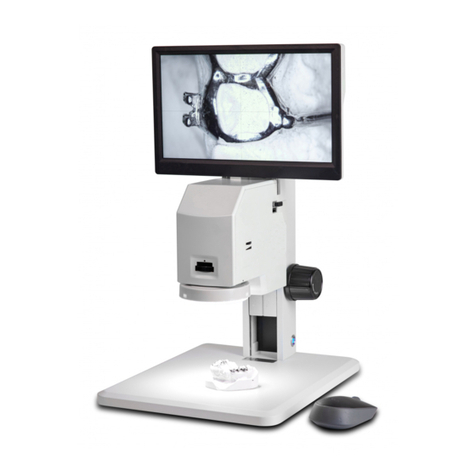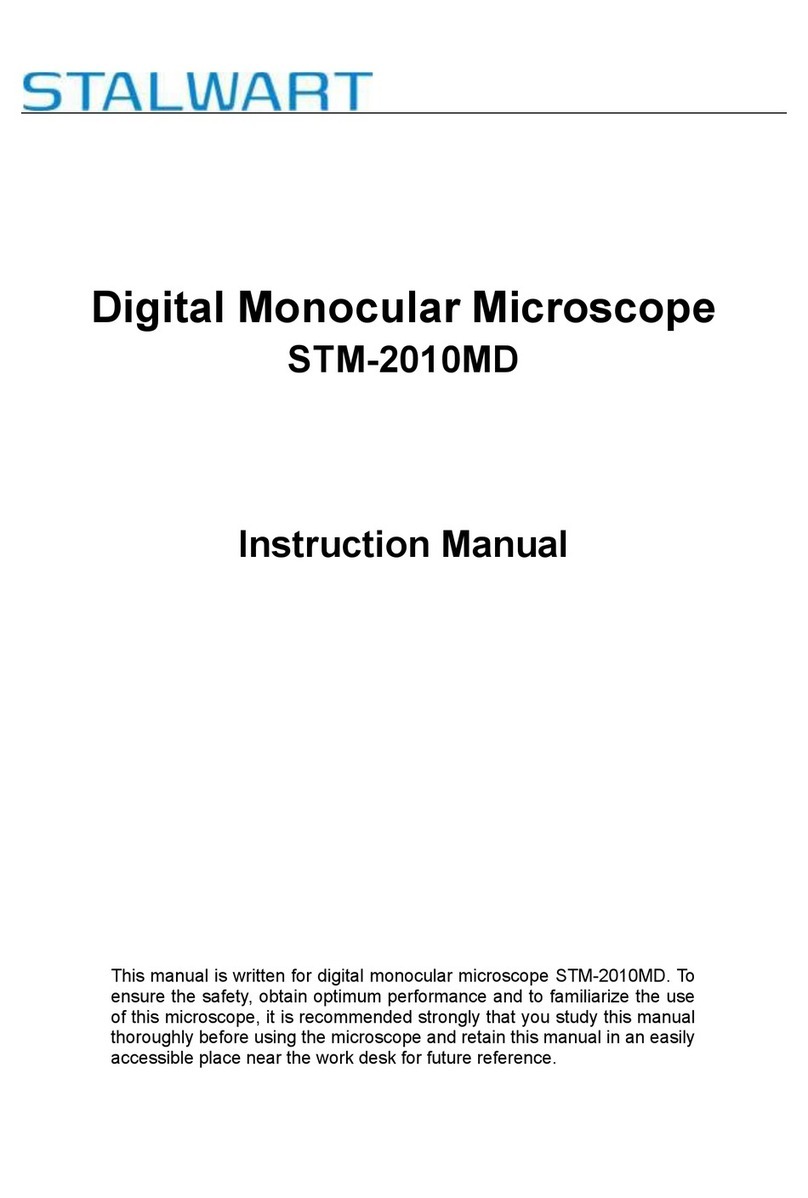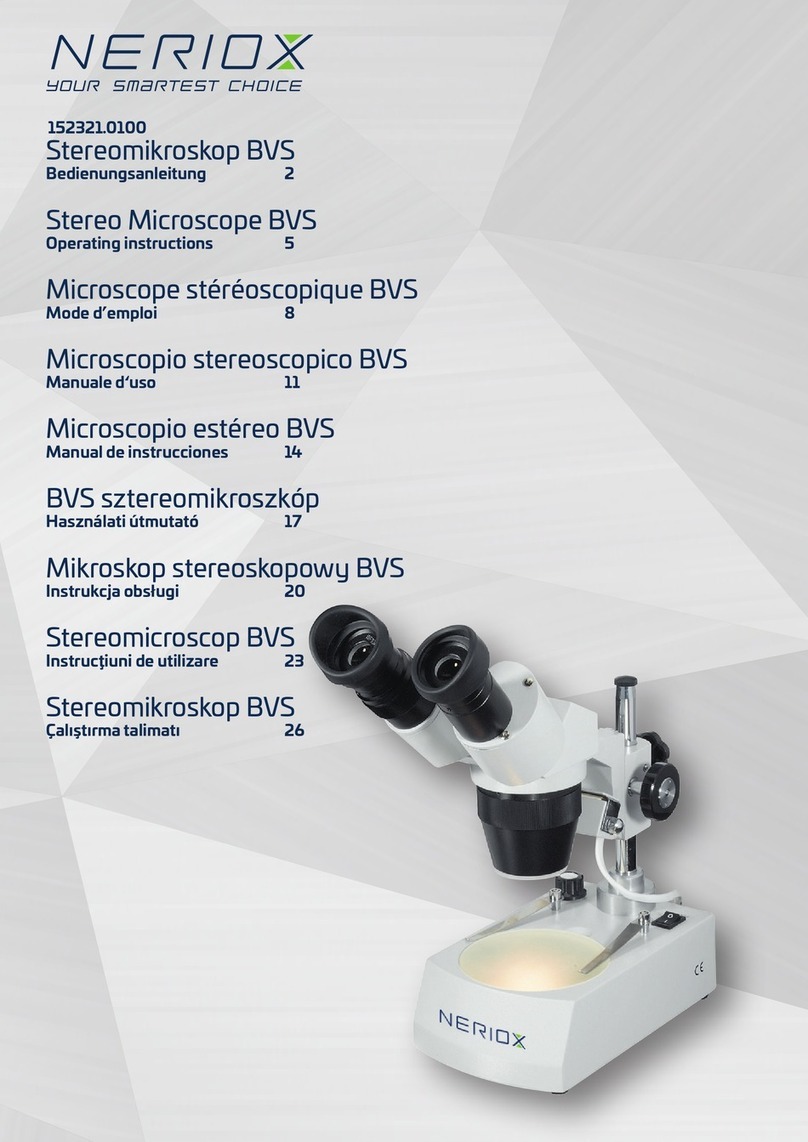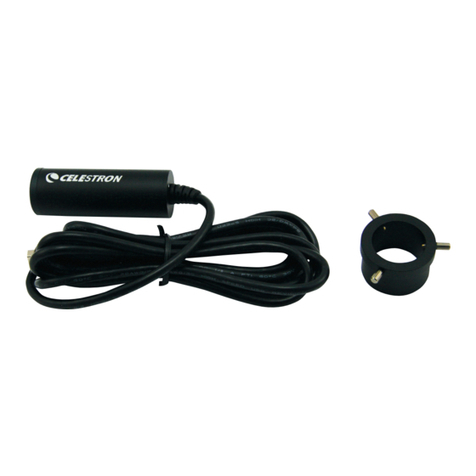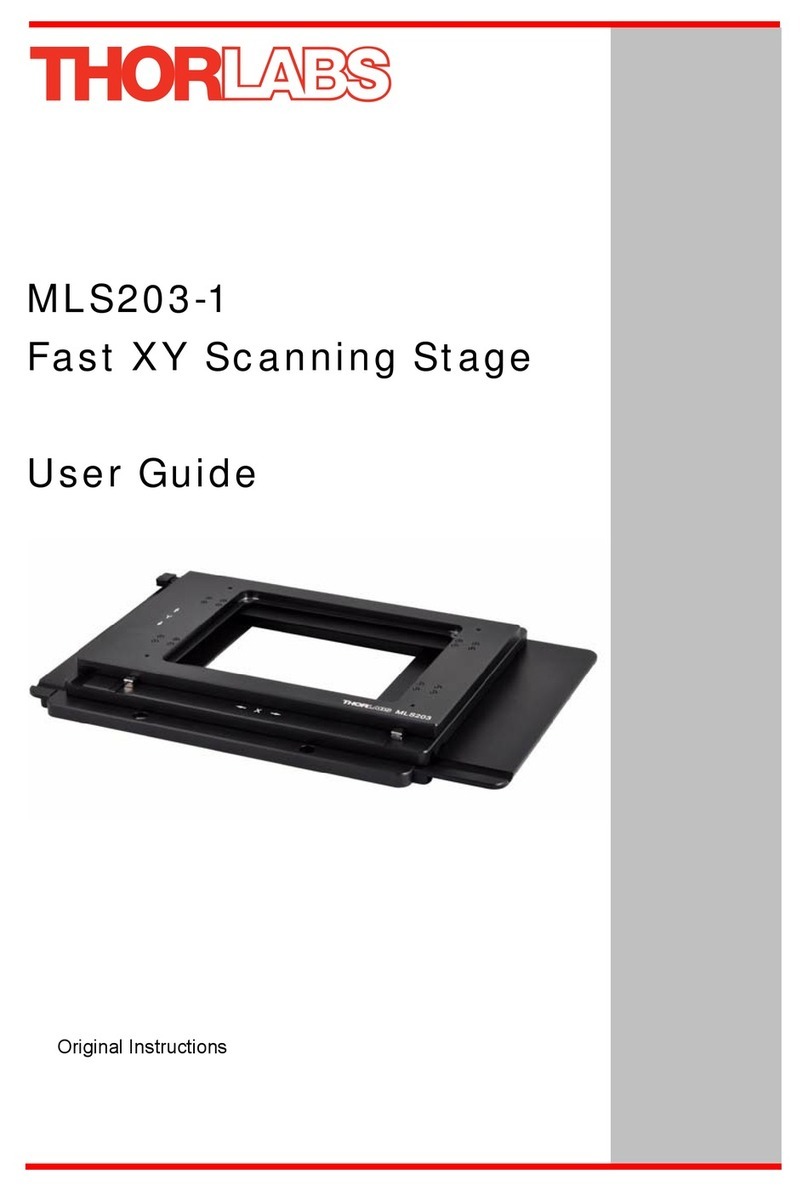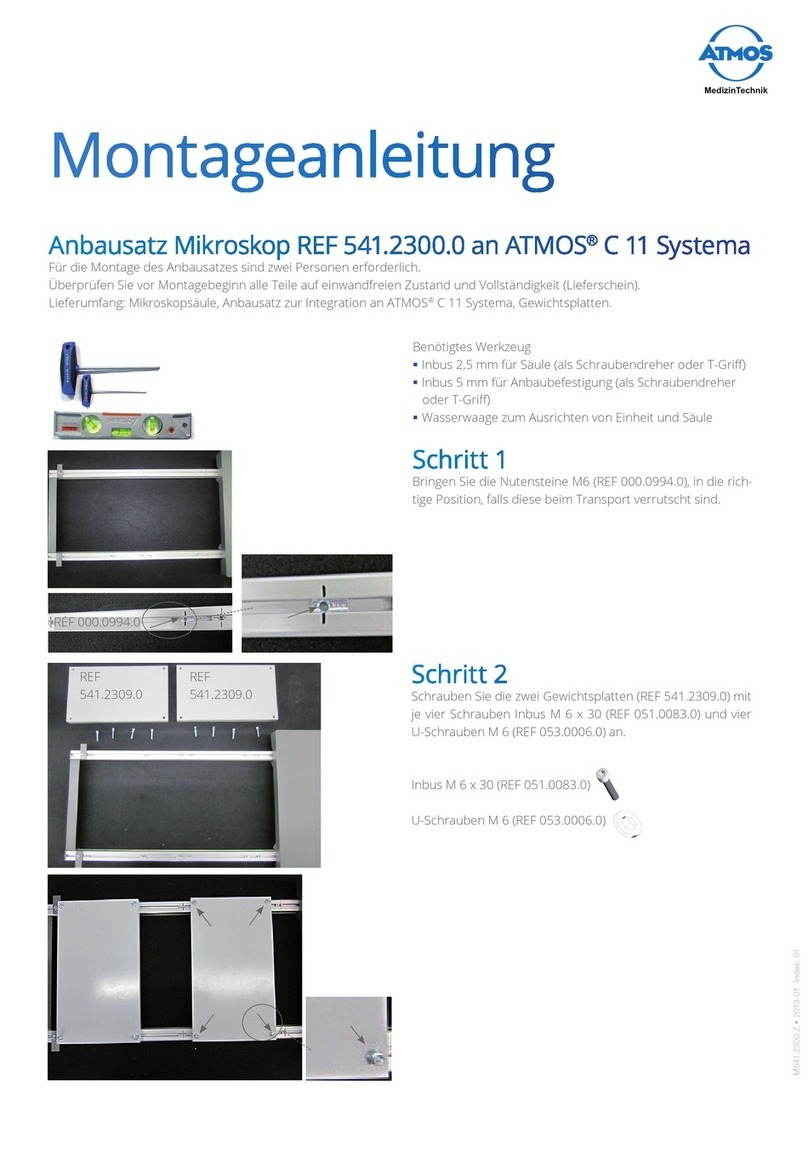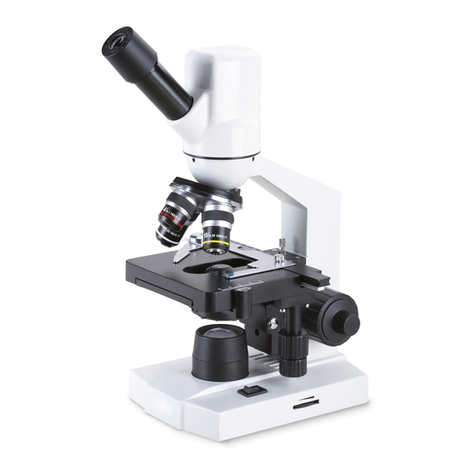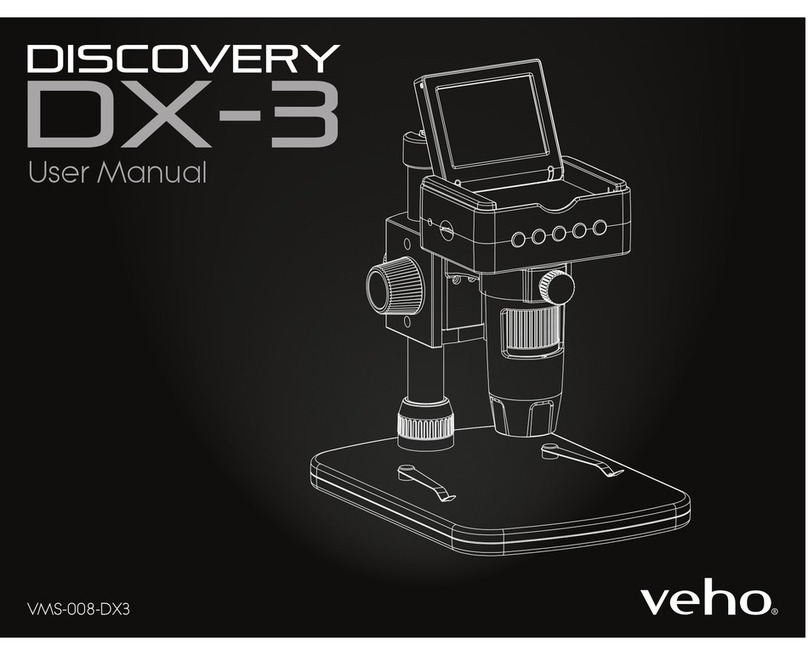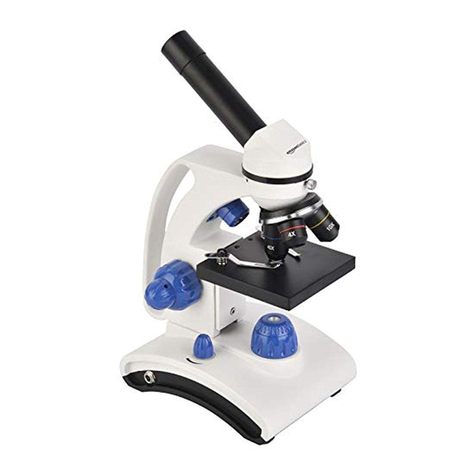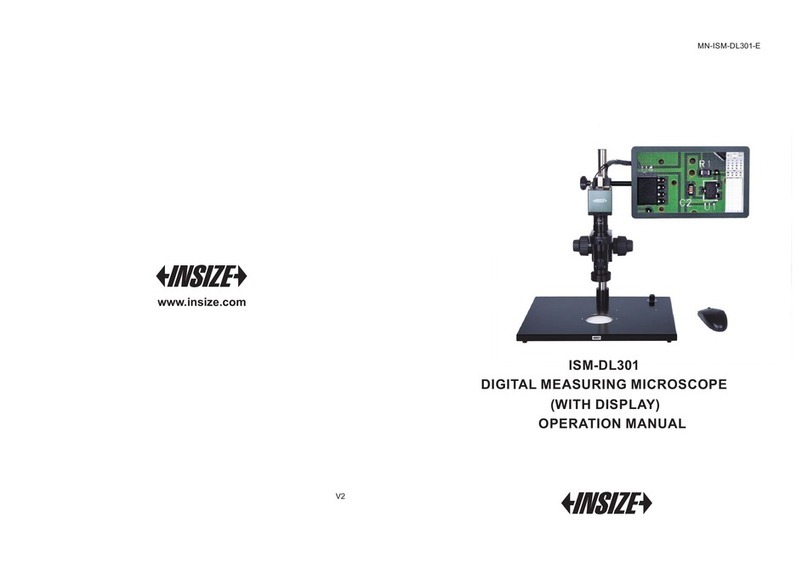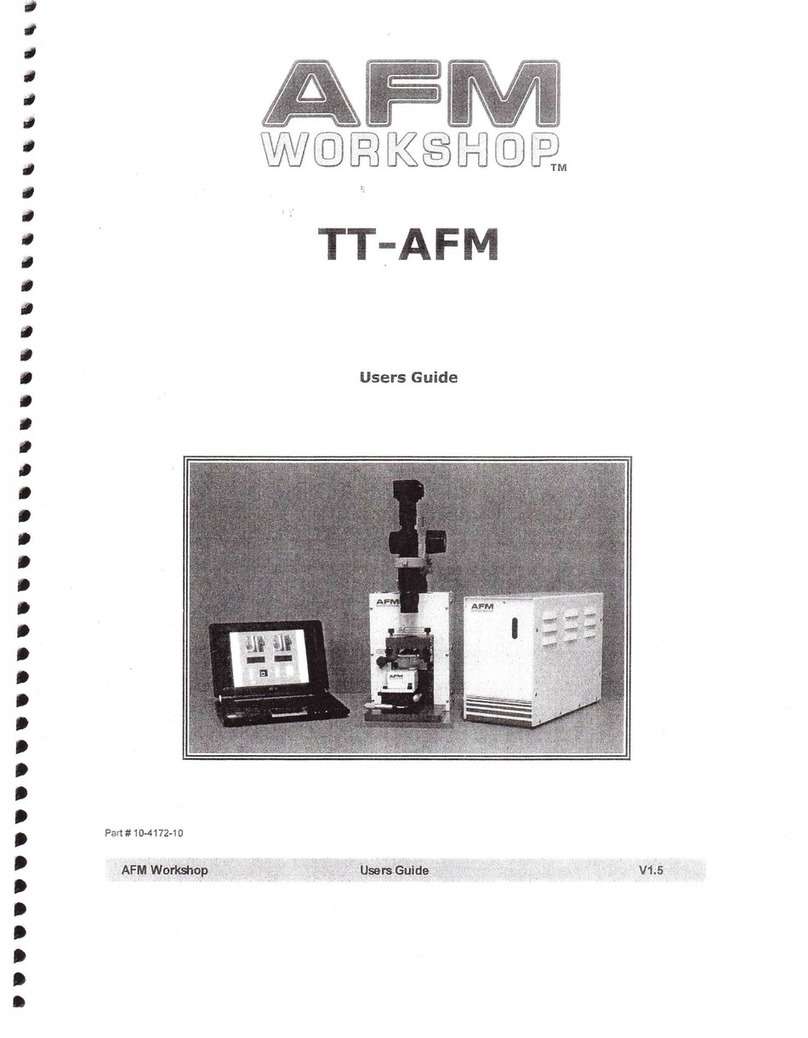BMS C2 Technical manual

This manual is written for BMS C2 BIOLOGICAL. For safety and for exerting the best
performance, making you familiar withthe instrumententirely, it is strongly recommended that
you readthis manual carefully before using the microscope. For the further reference, please place
this manual in a position where nearby the worktable and fetched easily.
BMS C2 Microscope
Operation Instruction

OVERVIEW

Follow the Instruction Below
1. Purpose
This microscope is only applied for microscopy observation, not for others.
2. Never disassemble
Disassembly may cause electrical shocks and/or severe damage to the instrument. Never
disassemble any part than that mentioned on this manual. If you notice any malfunction,
contact your nearest representative. Fungicide is used in the eyepiece tube, eyepieces
and objectives. If you should disassemble them and touch the parts inside, you may get a
rash with the fungicide
3. Heat at the Light Source
The light bulb and the lamp housing will be very hot after long hour working. Never touch
them by hands until they cool down, otherwise your hands will be hurt.
4. Power supply
Pay attention to the specifications of power supply, which marked on the microscope base.
The power supply must comply with the specifications; otherwise the microscope will be
damaged.
5. Changing the Light bulb
Before replacing the light bulb with new one, first turn off the light switch on the
microscope base, then take off the power plug and wait until the bulb cools down. Only
halogen bulb 6V/20W is workable on this microscope, never use other bulbs.
6. Storage
1) Before moving the microscope, turn off the light switch and take off the power plug.
2) Usually, following environment is required: lndoor temperature: 0 degree ~40 degree
Max relative humidity: 85%
3) After use, cover the microscope with the dust-cover provided, and store it in a dry and
clean place free from moisture to prevent rust.
7. Handle Gently
Microscope is a precision instrument. Handle it gently. Strong shocks and forcible
operations will cause severe damage to the instrument.

Assembly
Note
Take care on the following points when installing the microscope.
zBe careful not to get your fingers caught under the microscope.
zPlace the microscope in the following environment.
Room temperature: 0℃to 40℃
Relative humidity: max.85%
High temperature and humidity will cause molds, dew formation and damage.
zAvoid placing the microscope under the direct sunlight or the room light. Bright
circumstances deteriorate the specimen image.
zAvoid placing the microscope in dusty surroundings. When the microscope is not in
use, cover it up with a vinyl cover.

zPlace the microscope flat on the place free of vibration.
Lamp
Note
zLamp and vents are very hot during and right after the illumination. Be careful not
to get yourself burnt.
zUse the Halogen lamp bulb only. If the bulb burn out, contact your representative
for the replacement.
zDo not touch the glass part of the bulb by bare hands. Wear gloves or keep the
protecting cover on the bulb during installation. Wipe off any fingerprints or stains
using clean cloth moistened with pure alcohol since those burned into the bulb
surface will decrease brightness and cause lamp breakage.
zPull up the lamp cover clamp knob and remove the cover. Turn out the
heat-resisting plate and securely insert the lamp's contact pins into the socket
holes. Return the plate and the cover to their original place
Eyepiece tube
Mount the eyepiece tube onto the arm, and tighten the clamp screw.
Eyepieces
Insert the eyepieces into the eyepiece sleeves, and tighten the clamp screw.
Objectives
Lower the stage to its full limit, then screw the objectives into the revolving nosepiece.
Daylight Filter
Press the filter into the bottom of the auxiliary lens, and then insert the auxiliary lens into
the bottom of the condenser.
The phase-contrast observation GIF filter can be placed directly on the field lens unit
whenever necessary.
Condenser
Mount the condenser on the condenser holder with the aperture control lever facing
forward. Secure with the clamp screw
Power Cord
Turn OFF the power switch before connecting the power cord.
(Turn the Brightness control dial toward the rear of the microscope till the limit.)
Insert gently the cable-plug into the socket built-in the microscope base, then insert the
power plug into the socket of power supply.

MICROSCOPY
1. Lamp illumination
Turn the brightness control dial forward to achieve the desired
brightness.
2. Specimen Mounting
Mounting with the cover glass facing upwards.
3. Focusing with 10X Objectives
Choose the objective 4X or 10X. Turn the coarse focusing
knob to get the objective focused on the slide and then turn
the fine focus adjustment knob to get the image sharp and
clear.
4.Interpupillary Distance Adjustment
Adjust the interpupillary distance of binocular until the
right-left field of view can be composed one.
5. Eyepiece Diopter Adjustment
Firstly, observe at right tube with right eye, adjust coarse-fine
focusing knob to image clearly.
Secondly, observe at left tube with left eye, adjust the diopter
control 1 to image clearly.
6. Objective Selection
Rotate the revolving nosepiece to the desired objective
magnification, assuring it click-stops into position.
7. Aperture Diaphragm Adjustment
(This diaphragm is designed for numerical aperture
adjustment, not brightness.)
General, a good image of sufficient contrast can be achieved
with the aperture diaphragm stopped down to approximately
70-80% of the objective’s numerical aperture. To observe the

diaphragm image, remove the eyepiece and look down the
open tube at the exit pupil of the objective.
8. Field Diaphragm Adjustment
(For the field lens unit with Field Diaphragm)
Stop down the field diaphragm until the illuminated area
closely circumscribes the eyepiece viewfield.
The field diaphragm is used to control the specimen’s
illuminated area relative to the microscope viewfield. If it is
opened to a larger aperture than necessary, extraneous light
will enter the viewfield, reducing image quality and contrast.
9. Oil-immersion Observation
When using the 100X objectives, it is an oil-immersion type
requiring the application of immersion oil between its lens tip
and the coverglass.
If air bubbles enter the oil layer, a poor image will result. To
remove the air bubbles, rotate the nosepiece several times, or
apply an additional drop of oil.
After completing oil-immersion observation, be sure to clean
the front lens of the objective and any other parts coated with
oil.

Troubleshooting Tables
If difficulties should be encountered in the course of operation, and no major instrument malfunctions can
initially be detected, please recheck the symptoms, referring to the tables provided below, before contacting
your service representative.
1. Optical
Symptoms Causes Countermeasures
Revolving nosepiece not in click-stop
position(objective not centered optical path)
Revolve to click-stop position
(swing the objective correctly into
the optical path)
Field diaphragm not centered Centering
Field diaphragm closed too far Open properly
Darkness at the
periphery, or uneven
viewfield brightness. Dirt or dust on the lens (condenser,
objective, eyepiece, slide) Cleaning
Dirt or dust on the lens (condenser,
objective, eyepiece, slide) Cleaning
Dirt or dust on the slide. Cleaning
Dirt or dust in the
viewfield Condenser position too low Correct positioning
No coverglass attached to the slide Attach coverglass
Coverglass too thick or thin Use coverglass of specified
thickness(0.17mm)
Slide upside-down. Turn over the slide
Immersion oil on dry system objective
(especially 40X) Cleaning
Dirt or dust on the lens (condenser,
objective, eyepiece, slide) Cleaning
No immersion oil used on immersion system
objective Use immersion oil
Air bubbles in immersion oil Remove bubbles
Condenser aperture and field diaphragm
opened too far Close properly
Dirt or dust on the entrance lens. Cleaning
Condenser aperture closed too far Open properly
Poor image quality
(low resolution or
contrast)
Condenser position too low Raise to the position where the
diaphragm image is in focus
Revolving nosepiece not in click-stop
position Revolve to click-stop position
Image dark on one side
Floating specimen Fasten securely
Specimen rises from stage surface Place it stableImage shifts during
focus Revolving nosepiece not in click-stop
position Revolve to click-stop position
Image tinged yellow Daylight filter not used Use daylight filter

Symptoms Causes Countermeasures
Condenser aperture too small Readjust aperture
Condenser position too low Correct positioning
Insufficient illumination
brightness Dirt or dust on the lens (condenser,
objective, eyepiece, slide) Cleaning
2. Mechanical
Symptoms Causes Countermeasures
Specimen image
movement unsmooth Mechanical stage not securely fastened Tighten all fasteners
Slide upside-down Turn slide overImage not focusable
with high power
objectives Coverglass too thick Use coverglass of specified
thickness(0.17mm)
Slide upside-down Turn slide overHigh power objective
contacts slide when
changed-over from low
power Coverglass too thick Use coverglass of specified
thickness(0.17mm)
Specimen image
movement unsmooth Mechanical stage not securely fastened Tighten all fasteners
Binocular image not
integrated Interpupillary distance not correctly adjusted Adjustment
Incorrect diopter adjustment Correct adjustment
Excessive eye fatigue Inadequate brightness or illumination Adjust brightness with control
dial
3. Electrical
Symptoms Causes Countermeasures
No electrical power Check power cord connection
Lamp bulb not inserted Insert correctly
Lamp does not light
when switched ON Lamp failure
Replacement
If the same symptom occurs after
replacing the lamp, contact your
dealer
Unspecified lamp bulb used Replace with specified lamp bulb
Insufficient illumination
brightness Voltage too low Increase brightness with control
dial
Unstable lamp
brightness Lamp bulb about to fail Replacement
Lamp bulb not correctly inserted into socket Check for positive connection

Care and Maintenance
1. Cleaning Lenses
zDust is best removed with a soft brush or gauze.
zMore persistent dirt, such as fingerprints, grease and oil, may be removed with soft cotton, lens tissue, or
gauze lightly moistened with absolute alcohol (ethyl alcohol or methyl alcohol).
zTo clean immersion oil off the oil-immersion type objective, use lens tissue, soft cotton or gauze lightly
moistened with petroleum benzine only.
If petroleum benzene is not available, use methyl alcohol. In this case, you need to wipe three or four times
because the detergency of the methyl alcohol is somewhat weak.
zDo not use petroleum benzine to clean the entrance lens at the bottom of the eyepiece tube or prism
surfaces inside the eyepiece tube.
zAbsolute alcohol and petroleum benzine are quite inflammable. Take great care when handling them and
when setting the power switch on and off. Be very careful with fire
2. Cleaning Painted or Plastic Surfaces
zAvoid use of any organic solvents (such as alcohol, ether, thinner, etc.) to clean the painted or plastic
surfaces of the instrument. We recommend the use of silicon cloth. More persistent did may be cleaned with
mild detergent solution.
zPrinted plastic surfaces should be cleaned only by soft cloth moistened with water.
3. When Not in Use
zWhen the microscope is not in use, cover it up with a vinyl cover, and store it in a dry place not subject to
mold.
zWe especially recommend that the objectives and eyepieces be kept in a container (such as a
desiccators )with desiccant in it
4. Periodical Inspection
zTo maintain the performance of the microscope, periodical inspection is recommended. (Contact your
nearest representative for details.)
Other BMS Microscope manuals
